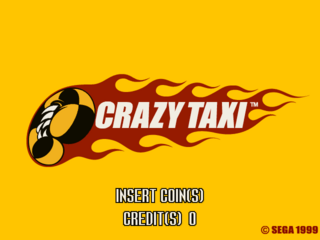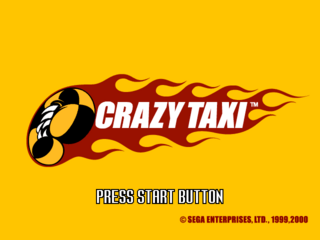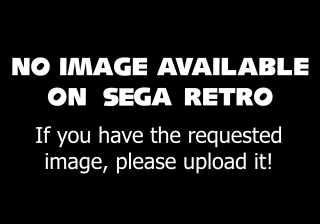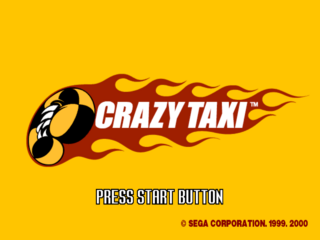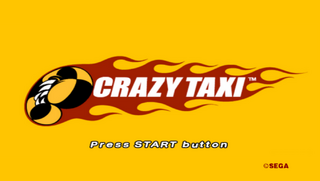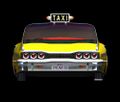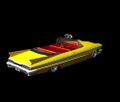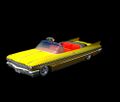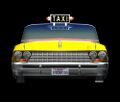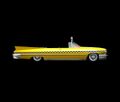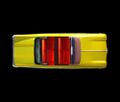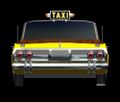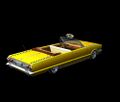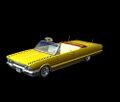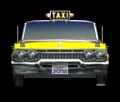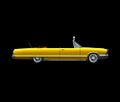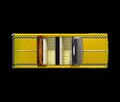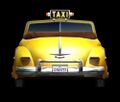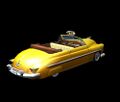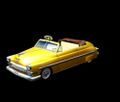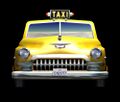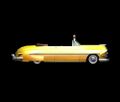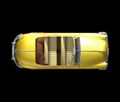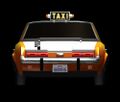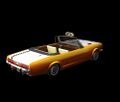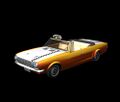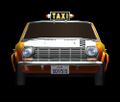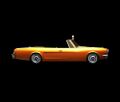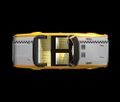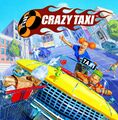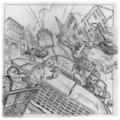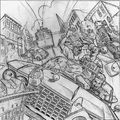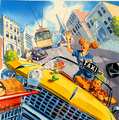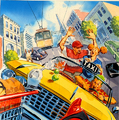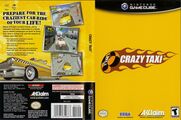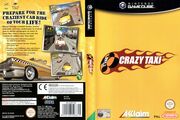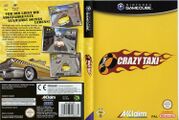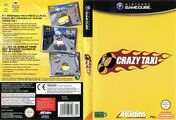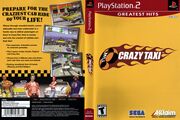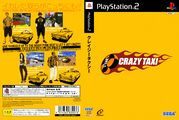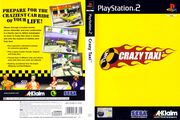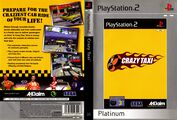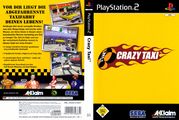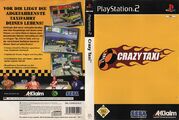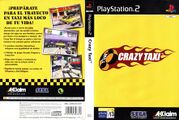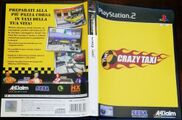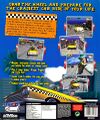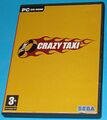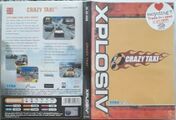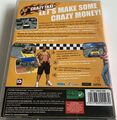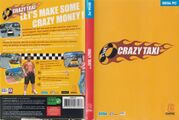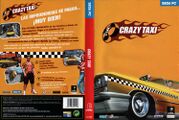Crazy Taxi
From Sega Retro
| This article needs to be rewritten. This article needs to be rewritten to conform to a higher standard of article quality. After the article has been rewritten, you may remove this message. For help, see the How to Edit a Page article. |
| |||||||||||||||||||||||||||||||||||||||||||||||||||||||||||||||||||||||||||||||||||||||||||||||||||||||||||||||||||||||||||||||||||||||||||||||||||||||||||||||||||||||||||||||||||||||||||||||||||||||||||||||||||||||||||||||||||||||||||||||||||||||||||||||||||||||||||||||||||||||||||||||||||||||||||||||||||||||||||||||||||||||||||||||||||||||||||||||||||||||||||||||||||||||||||||||||||||||||||||||||||||||||||||||||||||||||||||||||||||||||||||||||||||||||||||||||||||||||||||||||||||||||||||||||||||||
| Crazy Taxi | |||||||||||||||||||||||||||||||||||||||||||||||||||||||||||||||||||||||||||||||||||||||||||||||||||||||||||||||||||||||||||||||||||||||||||||||||||||||||||||||||||||||||||||||||||||||||||||||||||||||||||||||||||||||||||||||||||||||||||||||||||||||||||||||||||||||||||||||||||||||||||||||||||||||||||||||||||||||||||||||||||||||||||||||||||||||||||||||||||||||||||||||||||||||||||||||||||||||||||||||||||||||||||||||||||||||||||||||||||||||||||||||||||||||||||||||||||||||||||||||||||||||||||||||||||||||
|---|---|---|---|---|---|---|---|---|---|---|---|---|---|---|---|---|---|---|---|---|---|---|---|---|---|---|---|---|---|---|---|---|---|---|---|---|---|---|---|---|---|---|---|---|---|---|---|---|---|---|---|---|---|---|---|---|---|---|---|---|---|---|---|---|---|---|---|---|---|---|---|---|---|---|---|---|---|---|---|---|---|---|---|---|---|---|---|---|---|---|---|---|---|---|---|---|---|---|---|---|---|---|---|---|---|---|---|---|---|---|---|---|---|---|---|---|---|---|---|---|---|---|---|---|---|---|---|---|---|---|---|---|---|---|---|---|---|---|---|---|---|---|---|---|---|---|---|---|---|---|---|---|---|---|---|---|---|---|---|---|---|---|---|---|---|---|---|---|---|---|---|---|---|---|---|---|---|---|---|---|---|---|---|---|---|---|---|---|---|---|---|---|---|---|---|---|---|---|---|---|---|---|---|---|---|---|---|---|---|---|---|---|---|---|---|---|---|---|---|---|---|---|---|---|---|---|---|---|---|---|---|---|---|---|---|---|---|---|---|---|---|---|---|---|---|---|---|---|---|---|---|---|---|---|---|---|---|---|---|---|---|---|---|---|---|---|---|---|---|---|---|---|---|---|---|---|---|---|---|---|---|---|---|---|---|---|---|---|---|---|---|---|---|---|---|---|---|---|---|---|---|---|---|---|---|---|---|---|---|---|---|---|---|---|---|---|---|---|---|---|---|---|---|---|---|---|---|---|---|---|---|---|---|---|---|---|---|---|---|---|---|---|---|---|---|---|---|---|---|---|---|---|---|---|---|---|---|---|---|---|---|---|---|---|---|---|---|---|---|---|---|---|---|---|---|---|---|---|---|---|---|---|---|---|---|---|---|---|---|---|---|---|---|---|---|---|---|---|---|---|---|---|---|---|---|---|---|---|---|---|---|---|---|---|---|---|---|---|---|---|---|---|---|---|---|---|---|---|---|---|---|---|---|---|---|---|---|---|---|---|---|---|---|---|---|---|---|---|---|---|---|---|---|---|---|---|---|---|---|---|---|---|---|---|---|---|---|---|---|---|---|---|---|---|---|---|---|---|---|---|---|---|---|---|---|---|---|---|---|---|---|---|---|---|---|---|---|---|---|---|---|---|---|
| System(s): Sega NAOMI, Sega Dreamcast, PlayStation 2, PlayStation 3, GameCube, Xbox 360, Windows PC, Steam, Android, iOS | |||||||||||||||||||||||||||||||||||||||||||||||||||||||||||||||||||||||||||||||||||||||||||||||||||||||||||||||||||||||||||||||||||||||||||||||||||||||||||||||||||||||||||||||||||||||||||||||||||||||||||||||||||||||||||||||||||||||||||||||||||||||||||||||||||||||||||||||||||||||||||||||||||||||||||||||||||||||||||||||||||||||||||||||||||||||||||||||||||||||||||||||||||||||||||||||||||||||||||||||||||||||||||||||||||||||||||||||||||||||||||||||||||||||||||||||||||||||||||||||||||||||||||||||||||||||
| Publisher:
Sega Enterprises, Ltd.
Sega Corporation (JP)
Sega Corporation
Acclaim Entertainment (US/EU/AU)
Sega PC (JP)
Activision Value Publishing (US)
Empire Interactive (Europe)
| |||||||||||||||||||||||||||||||||||||||||||||||||||||||||||||||||||||||||||||||||||||||||||||||||||||||||||||||||||||||||||||||||||||||||||||||||||||||||||||||||||||||||||||||||||||||||||||||||||||||||||||||||||||||||||||||||||||||||||||||||||||||||||||||||||||||||||||||||||||||||||||||||||||||||||||||||||||||||||||||||||||||||||||||||||||||||||||||||||||||||||||||||||||||||||||||||||||||||||||||||||||||||||||||||||||||||||||||||||||||||||||||||||||||||||||||||||||||||||||||||||||||||||||||||||||||
| Developer: | |||||||||||||||||||||||||||||||||||||||||||||||||||||||||||||||||||||||||||||||||||||||||||||||||||||||||||||||||||||||||||||||||||||||||||||||||||||||||||||||||||||||||||||||||||||||||||||||||||||||||||||||||||||||||||||||||||||||||||||||||||||||||||||||||||||||||||||||||||||||||||||||||||||||||||||||||||||||||||||||||||||||||||||||||||||||||||||||||||||||||||||||||||||||||||||||||||||||||||||||||||||||||||||||||||||||||||||||||||||||||||||||||||||||||||||||||||||||||||||||||||||||||||||||||||||||
| Distributor: Tec Toy (BR) Halifax (IT) Planeta DeAgostini Interactive (ES) | |||||||||||||||||||||||||||||||||||||||||||||||||||||||||||||||||||||||||||||||||||||||||||||||||||||||||||||||||||||||||||||||||||||||||||||||||||||||||||||||||||||||||||||||||||||||||||||||||||||||||||||||||||||||||||||||||||||||||||||||||||||||||||||||||||||||||||||||||||||||||||||||||||||||||||||||||||||||||||||||||||||||||||||||||||||||||||||||||||||||||||||||||||||||||||||||||||||||||||||||||||||||||||||||||||||||||||||||||||||||||||||||||||||||||||||||||||||||||||||||||||||||||||||||||||||||
| Licensor: Sega Corporation (US/EU/AU) | |||||||||||||||||||||||||||||||||||||||||||||||||||||||||||||||||||||||||||||||||||||||||||||||||||||||||||||||||||||||||||||||||||||||||||||||||||||||||||||||||||||||||||||||||||||||||||||||||||||||||||||||||||||||||||||||||||||||||||||||||||||||||||||||||||||||||||||||||||||||||||||||||||||||||||||||||||||||||||||||||||||||||||||||||||||||||||||||||||||||||||||||||||||||||||||||||||||||||||||||||||||||||||||||||||||||||||||||||||||||||||||||||||||||||||||||||||||||||||||||||||||||||||||||||||||||
| Peripherals supported: Race Controller, Dreamcast VGA Box, Jump Pack, Visual Memory Unit | |||||||||||||||||||||||||||||||||||||||||||||||||||||||||||||||||||||||||||||||||||||||||||||||||||||||||||||||||||||||||||||||||||||||||||||||||||||||||||||||||||||||||||||||||||||||||||||||||||||||||||||||||||||||||||||||||||||||||||||||||||||||||||||||||||||||||||||||||||||||||||||||||||||||||||||||||||||||||||||||||||||||||||||||||||||||||||||||||||||||||||||||||||||||||||||||||||||||||||||||||||||||||||||||||||||||||||||||||||||||||||||||||||||||||||||||||||||||||||||||||||||||||||||||||||||||
| Genre: Driving Action[2], Action[3][4][5], Arcade[6][7] | |||||||||||||||||||||||||||||||||||||||||||||||||||||||||||||||||||||||||||||||||||||||||||||||||||||||||||||||||||||||||||||||||||||||||||||||||||||||||||||||||||||||||||||||||||||||||||||||||||||||||||||||||||||||||||||||||||||||||||||||||||||||||||||||||||||||||||||||||||||||||||||||||||||||||||||||||||||||||||||||||||||||||||||||||||||||||||||||||||||||||||||||||||||||||||||||||||||||||||||||||||||||||||||||||||||||||||||||||||||||||||||||||||||||||||||||||||||||||||||||||||||||||||||||||||||||
| Number of players: 1 | |||||||||||||||||||||||||||||||||||||||||||||||||||||||||||||||||||||||||||||||||||||||||||||||||||||||||||||||||||||||||||||||||||||||||||||||||||||||||||||||||||||||||||||||||||||||||||||||||||||||||||||||||||||||||||||||||||||||||||||||||||||||||||||||||||||||||||||||||||||||||||||||||||||||||||||||||||||||||||||||||||||||||||||||||||||||||||||||||||||||||||||||||||||||||||||||||||||||||||||||||||||||||||||||||||||||||||||||||||||||||||||||||||||||||||||||||||||||||||||||||||||||||||||||||||||||
| |||||||||||||||||||||||||||||||||||||||||||||||||||||||||||||||||||||||||||||||||||||||||||||||||||||||||||||||||||||||||||||||||||||||||||||||||||||||||||||||||||||||||||||||||||||||||||||||||||||||||||||||||||||||||||||||||||||||||||||||||||||||||||||||||||||||||||||||||||||||||||||||||||||||||||||||||||||||||||||||||||||||||||||||||||||||||||||||||||||||||||||||||||||||||||||||||||||||||||||||||||||||||||||||||||||||||||||||||||||||||||||||||||||||||||||||||||||||||||||||||||||||||||||||||||||||
Crazy Taxi (クレイジータクシー) is a video game developed by Sega AM3 and published by Sega Enterprises, Ltd. for Sega NAOMI arcade hardware in 1999. It is a non-linear action/game, in which players drive a taxi across a stage inspired by San Francisco, picking up customers and ferrying them to destinations in the fastest possible time. It builds on previous experiments with this genre such as Harley-Davidson & L.A. Riders.
This game was subsequently ported to the many consoles. And it stands as one of the more iconic and successful Sega franchises of the late 1990s and early 2000s, spawning several sequels, tie-ins and re-releases.
Contents
Gameplay
The main objective of the game is to pick up customers and take them to their chosen destination as fast as possible. Along the way, money can be earned (the game is primarily a score attack title) by performing outrageous stunts such as the "Crazy Through" (near-misses with other vehicles; both risk and reward are higher when driving against the flow of traffic) and "Crazy Drift" (extended, barely-controlled skidding).
When the destination is reached, that customer's fare is added to the player's total money earned, while "Speedy", "Normal" or "Slow" ratings are awarded depending on how long the player took to complete the journey. If the player is too slow in reaching the objective and the customer's timer runs out, a "Bad" rating is given before even reaching the destination, and the customer jumps from the taxi. There is no penalty for a "Bad" rating, but time will have been wasted attempting to deliver this customer. However, there is often sufficient time available on the main clock for the player to pick up another passenger with hope to make up for their loss. On the arcade version, if a player earns a "Bad" rating, the next fare starts at $0.00.
For each level, one can play under different time conditions: three-minute, five-minute or ten-minute settings, or the "Arcade Rules" used in the original coin-op version of the game but which was also included in the home versions. In the three time-limited settings, play continues for the designated period of time, after which the cab automatically stops and no more points can be scored.
Under Arcade Rules, the player starts with an initial time limit of around a minute (although in this first Crazy Taxi game it can be changed in the options screen), which can be extended through time bonuses earned for "Speedy" and "Normal" deliveries, as well as by making good use of whatever time is left over after making a delivery. Expert players, able to memorise the best route from pick-up to delivery, can thus continue playing for long periods of time - however, as time goes on, the "best" passengers will have been taken to their destinations, leaving fewer potential customers remaining, so as the game continues the challenge increases.
Cabbies
The player has a choice of four drivers and their cabs, each of whom has slightly different attributes:
| Axel | |
|---|---|
| The well-balanced cab choice. | |
| B.D. Joe | |
| The fastest floored speed but worst controlling. | |
| Gena | |
| The best acceleration/deceleration and braking. | |
| Gus | |
| Gus drives the heaviest cab, enabling him to drive well off-road and even onto most oncoming traffic. |
Courses
The arcade version of the game includes one level, and an additional "original" stage was added for the console versions. Both are based in sunny coastal California locales, with steep hills and other strong similarities to San Francisco (possibly due to the fact that Sega's American headquarters are located in San Francisco). North of the map, past the baseball stadium, a high rise city can be found for further adventure.
Stunts
The game features fast arcade-style gameplay, along with a variety of cab 'stunts'. The first stunt is the Crazy Dash, a forward burst of speed that can be pulled off in succession. To trigger the burst, the player must shift into 'drive' and directly follow it with the 'accelerate' button. The rear of the car is forced down somewhat, lifting the front end. For multiple dashes, hit 'reverse' and then again 'drive' immediately followed by 'accelerate' (known as the Limit Cut).
A variation called the "Crazy Backdash" involves performing a Crazy Dash and then shifting into reverse, so that the car reverses with a burst of speed. A side-effect of these three tricks is that the car gains massive traction and limited steering, which can be exploited by players to more easily weave in and out of traffic. It can also be exploited to do a "Crazy Stop", where after a Crazy Dash the brakes are applied and reverse gear engaged, causing the car to stop almost instantly. This causes the rear of the car to lift up, as if front wheel braking is applied.
Another stunt is the Crazy Drift. This is accomplished by quickly hitting 'reverse' and then 'drive' while making a sharp turn. A final, position-specific stunt is the Crazy Jump, which goes off automatically if the player goes off ramps or other sudden inclines.
Despite being violently thrown around and not seemingly strapped into the taxi in any visible way, passengers are usually appreciative of stunts and reward the player with bonus fares upon successful execution (i.e. not hitting anything). Mastery of stunts is essential for attaining high scores in the game.
Fares
| Near(Easy) | Far(Hard) | |||
| Red | Orange | Yellow | Yellow-Green | Green |
|---|
- Base Fare
- Tips
- Bonus Fare
Time Bonus
- Speedy
- Normal
- Slow
- Bad
Crazy Box
Console versions of the game also feature the "Crazy Box", a set of minigames that features challenges such as stopping by hitting a pole, picking up and dropping off a number customers within time limits, bowling using the taxi as a ball, and popping giant balloons in a field.
In "Crazy Box" mode, newer challenges can be unlocked by clearing three horizontal or vertical rows. Among these 'unlockables' is a minigame where the player must drive through the winding lanes designed like bowling alleys, knocking down 'pins' as they drive. The player is awarded points for each knockdown, and Grand Slams for a 'strike'.
- 1-1 Crazy Jump
- 1-2 Crazy Flag
- 1-3 Crazy Balloons
- 1-S Crazy Bowling
- 2-1 Crazy Drift
- 2-2 Crazy Turn
- 2-3 Crazy Bound
- 2-S Crazy Zigzag
- 3-1 Crazy Rush
- 3-2 Crazy Jam
- 3-3 Crazy Pole
- 3-S Crazy Zigzag 2
- S-1 Crazy Through
- S-2 Crazy Parking
- S-3 Crazy Party
- S-S Crazy Attack
Achievements
- Main article: Crazy Taxi/Achievements.
Soundtrack
One of the game's iconic features is the soundtrack performed by artists such as Bad Religion and The Offspring on the original version of the game. In some cases when it was brought to other platforms, the soundtrack was changed to reflect the game's release in modern iterations and to avoid paying potentially expensive licenses.
| Name | Artist | Version |
|---|---|---|
| "Inner Logic" | Bad Religion | |
| "Ten in 2010" | Bad Religion | |
| "Them and Us" | Bad Religion | |
| "Hear It" | Bad Religion | |
| "All I Want" | The Offspring | |
| "Change the World" | The Offspring | |
| "Way Down the Line" | The Offspring | |
| "Fingercuffs" | Pivit | (2002) |
| "Middle Children" | Pivit | (2002) |
| "The Distance" | Too Rude | (2002) |
| "Let it Roll" | Total Chaos | (2002) |
| "What You Gonna Do" | Total Chaos | (2002) |
| "Another Beautiful Day" | Oneofthesedays | (2011) |
| "Farewell to a Frield" | Oneofthesedays | (2011) |
| "No One Hears Me" | Oneofthesedays | (2011) |
| "Black Radio" | Jonny Rumble | (2011) |
| "The Chase" | Theron Day | (2011) |
| "Flinch" | (2011) | |
| "Radiator" | (2011) | |
| "Radical Sabbatical" | (2011) | |
| "Taking it Back" | (2011) | |
| "Ragdoll" | (2011) | |
| "Escape Artist" | Burn the Fields | (2011) |
| "Get Out" | The Hooks | (2011) |
| "Orange Wednesday" | One Light Out | (2011) |
| "Spy Chaser" | We Are Invisible | (2011) |
| "Your Mouth is a Guillotine" | The Vicious Five | (2011) |
History
Legacy
Crazy Taxi was ported to the Sega Dreamcast in 2000, and later the PlayStation 2, Nintendo GameCube and PC in 2001/2002.
In 2007 the game was bundled with Crazy Taxi 2 on the Playstation Portable in Crazy Taxi: Fare Wars.
In 2010 the game was re-released for Xbox Live Arcade and PlayStation Network services, and was bundled as part of Dreamcast Collection in 2011.
Every subsequent conversion based on the Sega Dreamcast version. In addition to the main game, there is also an additional environment called Original Mode as well as a Crazy Box mode full of mini game challenges. There is also an ability to play either Arcade Mode or Original Mode with a fixed time limit which does not offer time bonuses. Instead allows to play for three, five or ten minutes. However records are only recorded if the game is played by Arcade rules.
Sega, in conjunction with Goodman/Rosen Productions and the Donners' Company announced a Crazy Taxi action/comedy movie in late 2000[60], but the idea never got off the ground.
Sega Logistics Service announced it would end service on Crazy Taxi arcade machines on March 31, 2017.[61][62]
Licensing
In its original form, many of the destinations in Crazy Taxi were fictional outlets and restaurants of real-life chains, including KFC, Pizza Hut, Tower Records, (The Original) Levi's (Store) and Fila. While present in the NAOMI, Dreamcast, PlayStation 2 and GameCube versions, from the PC version onwards, these venues were replaced with fictionalised chains.
Most of the changes occurred in the PC version of the game, and were carried through to the XBLA and PSN ports. KFC became "FCS", or "Fried Chicken Shack", Pizza Hut became "Pizza Parlour", Tower Records became "Record Store" (with a new colour scheme), Levi's became XXX and Fila became YYY.
Versions
Version history
- Main article: Crazy Taxi/Changelog.
| System | Version | Size | Date | Comment | Ref | Icon | |
|---|---|---|---|---|---|---|---|
| 4.4 | 249MB | 2020-07-24 | [63] | ||||
| 3.8 | 246MB | 2019-12-10 | [64] | ||||
| 3.7 | 246MB | 2019-11-04 | [65] | ||||
| 3.6 | 246MB | 2019-10-10 | [64] | ||||
| 3.3 | 245MB | 2019-06-18 | [64] | ||||
| 3.2 | 241MB | 2019-02-19 | [6] | ||||
| 3.1 | 241MB | 2018-10-30 | [66] | ||||
| 2.6 | 241MB | 2017-12-18 | [67] | ||||
| 2.5 | 241MB | 2017-11-08 | [68] | ||||
| 2.3 | 241MB | 2017-09-13 | Sega Forever. | [68] | |||
| 2.0 | 242MB | 2017-05-25 | [68] | ||||
| 1.52 | 227MB | 2015-07-06 | [7] | ||||
| 1.40 | 227MB | 2014-01-06 | [5] | ||||
| 1.30 | 227MB | 2013-11-06 | [69] | ||||
| 1.20 | 228MB | 2013-08-28 | [70] | ||||
| 1.0.0 | 227MB | 2013-08-08 | [71] | ||||
| 3.0.5 | 354.8MB | 2019-12-10 | [72] | ||||
| 3.0.4 | 2019-11-04 | [72] | |||||
| 3.0.0 | 344.6MB | 2019-06-18 | [73] | ||||
| 2.8.1 | 2018-10-29 | [72] | |||||
| 2.6.0 | 285MB | 2018-03-05 | [74] | ||||
| 2.5.0 | 285MB | 2017-12-18 | [75] | ||||
| 2.1.1 | 283MB | 2017-09-25 | [76] | ||||
| 2.1 | 280MB | 2017-05-31 | [77] | ||||
| 2.02 | 277MB | 2017-05-31 | [78] | ||||
| 2.01 | 2017-05-26 | Sega Forever. | [74] | ||||
| 1.3 | 227MB | 2014-03-14 | [79] | ||||
| 1.3 | 151MB | 2014-03-14 | [80] | ||||
| 1.2 (JP) | 151MB | 2013-02-01 | [81] | ||||
| 1.2 | 144MB | 2013-01-03 | [82] | ||||
| 1.1 | 135MB | 2012-11-13 | [54] | ||||
| 1.0.0 | 2012-10-05 | [74] | |||||
| 2014-09-15 | [83] |
Production credits
- Main article: Crazy Taxi/Production credits.
Downloadable content
- Main article: Crazy Taxi/Downloadable content.
Digital manuals
Magazine articles
- Main article: Crazy Taxi/Magazine articles.
Promotional material
- Main article: Crazy Taxi/Promotional material.
Artwork
Sega Forever icon
Physical scans
NAOMI version
| Sega Retro Average | |||||||||||||||||||
|---|---|---|---|---|---|---|---|---|---|---|---|---|---|---|---|---|---|---|---|
|
| 77 | |
|---|---|
| Based on 3 reviews | |
Dreamcast version
| Sega Retro Average | |||||||||||||||||||||||||||||||||||||||||||||||||||||||||||||||||||||||||||||||||||||||||||||||||||||||||||||||||||||||||||||||||||||||||||||||||||||||||||||||||||||||||||||||||||
|---|---|---|---|---|---|---|---|---|---|---|---|---|---|---|---|---|---|---|---|---|---|---|---|---|---|---|---|---|---|---|---|---|---|---|---|---|---|---|---|---|---|---|---|---|---|---|---|---|---|---|---|---|---|---|---|---|---|---|---|---|---|---|---|---|---|---|---|---|---|---|---|---|---|---|---|---|---|---|---|---|---|---|---|---|---|---|---|---|---|---|---|---|---|---|---|---|---|---|---|---|---|---|---|---|---|---|---|---|---|---|---|---|---|---|---|---|---|---|---|---|---|---|---|---|---|---|---|---|---|---|---|---|---|---|---|---|---|---|---|---|---|---|---|---|---|---|---|---|---|---|---|---|---|---|---|---|---|---|---|---|---|---|---|---|---|---|---|---|---|---|---|---|---|---|---|---|---|---|---|
|
| 89 | |
|---|---|
| Based on 35 reviews | |
| Dreamcast, US (Sega All Stars) |
|---|
| Dreamcast, EU |
|---|
GameCube version
| Sega Retro Average | ||||||||||||||||||||||||||||||||||||||||||||||||||||||||||||||||||||||||||||||||||||||||||||||
|---|---|---|---|---|---|---|---|---|---|---|---|---|---|---|---|---|---|---|---|---|---|---|---|---|---|---|---|---|---|---|---|---|---|---|---|---|---|---|---|---|---|---|---|---|---|---|---|---|---|---|---|---|---|---|---|---|---|---|---|---|---|---|---|---|---|---|---|---|---|---|---|---|---|---|---|---|---|---|---|---|---|---|---|---|---|---|---|---|---|---|---|---|---|---|
|
| 69 | |
|---|---|
| Based on 18 reviews | |
PlayStation 2 version
| Sega Retro Average | |||||||||||||||||||||||||||||||||||||||||||||||||||||||||||||||||||||||||||||||||||||||||||||||||||
|---|---|---|---|---|---|---|---|---|---|---|---|---|---|---|---|---|---|---|---|---|---|---|---|---|---|---|---|---|---|---|---|---|---|---|---|---|---|---|---|---|---|---|---|---|---|---|---|---|---|---|---|---|---|---|---|---|---|---|---|---|---|---|---|---|---|---|---|---|---|---|---|---|---|---|---|---|---|---|---|---|---|---|---|---|---|---|---|---|---|---|---|---|---|---|---|---|---|---|---|
|
| 81 | |
|---|---|
| Based on 19 reviews | |
PC version
| Sega Retro Average | |||||||||||||||||||
|---|---|---|---|---|---|---|---|---|---|---|---|---|---|---|---|---|---|---|---|
|
| 72 | |
|---|---|
| Based on 3 reviews | |
| PC, EU? (Xplosiv Gold) |
|---|
| PC, UK (Xplosiv) |
|---|
| PC, UK (Xplosiv; newer) |
|---|
| PC, UK (White Label Reload) |
|---|
| PC, FR (Hits Collection) |
|---|
| PC, DE (Xplosiv) |
|---|
| PC, ES (FX Interactive) |
|---|
| PC, ES (FX Interactive with sticker) |
|---|
| PC, IT |
|---|
|
| PC, PT (Top Games) |
|---|
| PC, SE/NO/FI/DK/EE (PC Best Buy) |
|---|
| PC, AU (Valusoft) |
|---|
| PC, IL (Xtreme) |
|---|
Technical information
- Main article: Crazy Taxi/Technical information.
External links
- Sega of America webpage: Dreamcast
- Sega of Japan catalogue pages (Japanese): Dreamcast, PC, PlayStation 2, GameCube (archive)
- Nintendo catalogue pages: JP, US (archive)
- Crazy Taxi on Xbox Marketplace: JP, US, UK, AU, KR
- Crazy Taxi on PlayStation.com: PlayStation 2: JP, US; PlayStation 3: JP, US, UK, KR
- Crazy Taxi on PlayStation Store: JP, US, UK, AU, KR, TW
- Crazy Taxi on Steam
- Crazy Taxi on iTunes: JP, US, UK
- Crazy Taxi on Google Play (offline)
References
- ↑ Sega Arcade History, Enterbrain, page 166
- ↑ File:Crazytaxi dc jp back cover.jpg
- ↑ 3.0 3.1 3.2 http://sega.jp/dc/000109/ (Wayback Machine: 2010-06-22 07:06)
- ↑ https://sega.jp/history/hard/dreamcast/software.html (Wayback Machine: 2020-10-23 17:28)
- ↑ 5.0 5.1 Google Play (com.sega.CrazyTaxiasn) (Wayback Machine: 2014-10-07 14:17)
- ↑ 6.0 6.1 Google Play (com.sega.CrazyTaxiplayhaven) (Wayback Machine: 2019-04-06 22:46)
- ↑ 7.0 7.1 Google Play (com.sega.CrazyTaxi) (Wayback Machine: 2015-07-26 00:44)
- ↑ https://archive.org/details/ArcadeGameList1971-2005/page/n133/mode/1up
- ↑ Press release: 1999-12-09: TAKE A WILD RIDE WITH CRAZY TAXI FOR SEGA DREAMCAST
- ↑ http://www.sega.com:80/games/dreamcast/post_dreamcastgame.jhtml?PRODID=227 (Wayback Machine: 2003-12-08 03:11)
- ↑ Press release: 2000-02-02: CRAZY TAXI RACES TO SEGA DREAMCAST WITH IRREVERENT, OFF-THE-WALL DRIVING FUN
- ↑ http://www.chipsworld.co.uk/detProd.asp?ProductCode=1912 (Wayback Machine: 2002-11-12 15:51)
- ↑ https://groups.google.com/g/uk.games.video.dreamcast/c/B3Iglum5F4c/m/N-D9RzKGhsoJ
- ↑ Computer & Video Games, "March 2000" (UK; 2000-02-16), page 113
- ↑ http://www.micromania.fr/cgi-micromania/tri3.pl?criteria=DREAMCAS;status=1 (Wayback Machine: 2000-04-07 11:43)
- ↑ http://www.centromail.es/top/producto2.asp?codmail=14216 (Wayback Machine: 2000-05-17 10:14)
- ↑ http://www.futuregamez.net:80/outnow/dc.html (Wayback Machine: 2001-07-31 23:17)
- ↑ Hyper, "April 2000" (AU; 2000-xx-xx), page 64
- ↑ Press release: 2001-04-06: Acclaim Acquires Rights to Crazy Taxi for Playstation2 Computer Entertainment System
- ↑ 20.0 20.1 http://www.jp.playstation.com/software/title/slpm62102.html (Wayback Machine: 2007-05-02 11:56)
- ↑ Hyper, "July 2001" (AU; 2001-05-23), page 54
- ↑ http://www.nintendo.com/games/gamepage/gamepage_main.jsp?gameId=656&showMe=1 (Wayback Machine: 2003-02-04 23:44)
- ↑ http://www.amazon.co.uk:80/Acclaim-Crazy-Taxi-GameCube/dp/B000062VSK (Wayback Machine: 2011-12-13 13:35)
- ↑ Cube, "Issue Three" (UK; 2002-02-14), page 15
- ↑ http://www.amazon.fr:80/Acclaim-Crazy-Taxi/dp/B000065DZO (Wayback Machine: 2011-01-10 21:47)
- ↑ http://www.amazon.de:80/Acclaim-Crazy-Taxi/dp/B0000631UR? (Wayback Machine: 2014-12-27 10:12)
- ↑ 27.0 27.1 http://sega.jp/gc/craztaxi/ (Wayback Machine: 2004-08-21 12:28)
- ↑ 28.0 28.1 http://www.sega.jp/pc/craztaxi/ (Wayback Machine: 2009-12-17 10:51)
- ↑ http://www.amazon.co.uk/exec/obidos/ASIN/B00006680Z (Wayback Machine: 2004-05-19 10:17)
- ↑ 30.0 30.1 http://www.empireinteractive.com/media/eimediaPRPage.asp?press=83 (Wayback Machine: 2002-10-03 08:37)
- ↑ 31.0 31.1 31.2 31.3 31.4 https://steamdb.info/app/71230/ (Wayback Machine: 2017-05-22 06:47)
- ↑ 32.0 32.1 32.2 32.3 http://steamdb.info/app/71230/ (Wayback Machine: 2013-05-22 20:23)
- ↑ http://store.steampowered.com:80/app/71230 (Wayback Machine: 2011-03-07 07:53)
- ↑ 34.0 34.1 http://blogs.sega.com/2010/11/16/crazy-taxi-out-now-on-psn/ (Wayback Machine: 2017-06-10 14:34)
- ↑ PlayStation Store (en-us; UP0177-NPUB30242_00-CRAZYTAXIPACKAGE) (Wayback Machine: 2018-03-27 17:52)
- ↑ 36.0 36.1 PlayStation Store (fr-fr; EP0177-NPEB00303_00-CRAZYTAXIPACKAGE) (Wayback Machine: 2018-03-27 17:53)
- ↑ 37.0 37.1 PlayStation Store (de-de; EP0177-NPEB00303_00-CRAZYTAXIPACKAGE) (Wayback Machine: 2018-11-25 23:41)
- ↑ 38.0 38.1 PlayStation Store (en-gb; EP0177-NPEB00303_00-CRAZYTAXIPACKAGE) (Wayback Machine: 2018-03-27 17:53)
- ↑ 39.0 39.1 http://www.jp.playstation.com/software/title/jp0177npjb00087_00crazytaxipackage.html (Wayback Machine: 2010-12-04 22:38)
- ↑ 40.0 40.1 PlayStation Store (ko-kr; HP0177-NPHB00229_00-CRAZYTAXIPACKAGE) (Wayback Machine: 2018-03-27 17:55)
- ↑ 41.0 41.1 PlayStation Store (en-au; EP0177-NPEB00303_00-CRAZYTAXIPACKAGE) (Wayback Machine: 2018-03-27 17:54)
- ↑ 42.0 42.1 PlayStation Store (en-tw; HP0177-NPHB00229_00-CRAZYTAXIPACKAGE) (Wayback Machine: 2018-03-27 17:55)
- ↑ 43.0 43.1 43.2 43.3 http://blogs.sega.com/2010/10/13/crazy-taxi-launches-this-november/ (Wayback Machine: 2017-07-03 21:09)
- ↑ 44.0 44.1 Xbox LIVE Marketplace (en-US; Crazy-Taxi/66acd000-77fe-1000-9115-d80258410a34) (Wayback Machine: 2010-11-29 23:59)
- ↑ 45.0 45.1 Xbox LIVE Marketplace (en-GB; Crazy-Taxi/66acd000-77fe-1000-9115-d80258410a34) (Wayback Machine: 2010-11-27 17:38)
- ↑ 46.0 46.1 Xbox LIVE Marketplace (fr-FR; Crazy-Taxi/66acd000-77fe-1000-9115-d80258410a34) (Wayback Machine: 2010-12-30 02:07)
- ↑ 47.0 47.1 Xbox LIVE Marketplace (de-DE; Crazy-Taxi/66acd000-77fe-1000-9115-d80258410a34) (Wayback Machine: 2010-11-29 02:23)
- ↑ 48.0 48.1 48.2 Xbox LIVE Marketplace (en-AU; Crazy-Taxi/66acd000-77fe-1000-9115-d80258410a34) (Wayback Machine: 2010-12-22 23:40)
- ↑ 49.0 49.1 Xbox LIVE Marketplace (ja-JP; Crazy-Taxi/66acd000-77fe-1000-9115-d80258410a34) (Wayback Machine: 2015-11-15 10:58)
- ↑ 50.0 50.1 Xbox LIVE Marketplace (ko-KR; Crazy-Taxi/66acd000-77fe-1000-9115-d80258410a34) (Wayback Machine: 2015-11-15 09:27)
- ↑ 51.0 51.1 Xbox LIVE Marketplace (zh-TW; Crazy-Taxi/66acd000-77fe-1000-9115-d80258410a34) (Wayback Machine: 2010-12-03 02:11)
- ↑ 52.0 52.1 Xbox LIVE Marketplace (zh-TW; %E8%A9%A6%E7%8E%A9%E7%89%88%E9%81%8A%E6%88%B2-Crazy-Taxi/00000000-0000-4000-8000-000058410a34) (Wayback Machine: 2011-01-16 03:40)
- ↑ 53.0 53.1 http://blogs.sega.com/2012/10/11/crazy-taxi-out-now-on-iphone-ipad-and-ipod-touch/ (Wayback Machine: 2017-07-19 01:45)
- ↑ 54.0 54.1 https://itunes.apple.com/app/id553921725 (Wayback Machine: 2012-11-30 01:59)
- ↑ 55.0 55.1 55.2 55.3 55.4 55.5 55.6 55.7 http://blogs.sega.com/2013/07/10/crazy-taxi-arrives-for-android/ (Wayback Machine: 2017-08-19 10:32)
- ↑ 56.0 56.1 http://www.4gamer.net/games/195/G019540/ (Wayback Machine: 2014-10-19 23:48)
- ↑ 57.0 57.1 57.2 57.3 57.4 57.5 @SEGAForever on Twitter (Wayback Machine: 2017-09-22 17:55)
- ↑ 58.0 58.1 58.2 58.3 http://www.4gamer.net/games/225/G022519/ (Wayback Machine: 2015-06-03 11:50)
- ↑ http://www.jp.playstation.com/software/title/jp0177npjb00087_00crazytaxipackage.html (Wayback Machine: 2015-09-18 10:46)
- ↑ GamePro, "February 2001" (US; 2001-0x-xx), page 28
- ↑ File:SegaProductsTerminationAnnouncement 2016-11 JP.pdf
- ↑ File:SegaProductsTerminationAnnouncement 2016-12.pdf
- ↑ Google Play (com.sega.CrazyTaxiplayhaven) (Wayback Machine: 2020-10-22 13:23)
- ↑ 64.0 64.1 64.2 Google Play (com.sega.CrazyTaxiplayhaven) (Wayback Machine: 2019-12-28 14:24)
- ↑ APKPure (com.sega.CrazyTaxiplayhaven) (Wayback Machine: 2020-05-02 01:50)
- ↑ APKPure (com.sega.CrazyTaxiplayhaven) (Wayback Machine: 2019-04-06 22:43)
- ↑ Google Play (com.sega.CrazyTaxiplayhaven) (Wayback Machine: 2017-12-22 00:05)
- ↑ 68.0 68.1 68.2 APKPure (com.sega.CrazyTaxiplayhaven) (Wayback Machine: 2018-07-30 22:39)
- ↑ Google Play (com.sega.CrazyTaxiasn) (Wayback Machine: 2013-11-09 22:17)
- ↑ Google Play (com.sega.CrazyTaxi) (Wayback Machine: 2013-09-01 05:41)
- ↑ Google Play (com.sega.CrazyTaxi) (Wayback Machine: 2013-08-11 15:13)
- ↑ 72.0 72.1 72.2 https://apps.apple.com/us/app/crazy-taxi/id553921725 (Wayback Machine: 2020-03-30 16:13)
- ↑ https://apps.apple.com/us/app/crazy-taxi/id553921725 (Wayback Machine: 2019-10-31 07:27)
- ↑ 74.0 74.1 74.2 https://itunes.apple.com/us/app/crazy-taxi/id553921725?mt=8 (Wayback Machine: 2018-09-02 23:51)
- ↑ https://itunes.apple.com/us/app/crazy-taxi/id553921725?mt=8 (Wayback Machine: 2017-12-22 00:17)
- ↑ https://itunes.apple.com/us/app/crazy-taxi/id553921725?mt=8 (Wayback Machine: 2017-10-29 02:42)
- ↑ https://itunes.apple.com/us/app/crazy-taxi/id553921725?mt=8 (Wayback Machine: 2017-09-18 01:03)
- ↑ https://itunes.apple.com/us/app/crazy-taxi/id553921725?mt=8 (Wayback Machine: 2017-08-30 13:27)
- ↑ https://itunes.apple.com/us/app/crazy-taxi/id553921725?mt=8 (Wayback Machine: 2016-12-07 15:47)
- ↑ https://itunes.apple.com/us/app/crazy-taxi/id553921725?mt=8 (Wayback Machine: 2014-03-14 14:50)
- ↑ https://itunes.apple.com/jp/app/kureijitakushi-crazy-taxi/id579156332?mt=8 (Wayback Machine: 2014-04-29 18:28)
- ↑ https://itunes.apple.com/us/app/crazy-taxi/id553921725?mt=8 (Wayback Machine: 2013-01-22 07:29)
- ↑ http://steamcommunity.com:80/games/71230/announcements/detail/166953776886493542 (Wayback Machine: 2016-05-10 05:37)
- ↑ Arcade, "July 1999" (UK; 1999-06-03), page 117
- ↑ Game Informer, "June 1999" (US; 1999-0x-xx), page 71
- ↑ Player One, "Octobre 1999" (FR; 1999-xx-xx), page 146
- ↑ 576 Konzol, "Május 2000" (HU; 2000-xx-xx), page 34
- ↑ Arcade, "February 2000" (UK; 2000-01-31), page 92
- ↑ Bonus, "3/2000" (YU; 2000-05-04), page 50
- ↑ Consoles +, "Mars 2000" (FR; 2000-0x-xx), page 88
- ↑ Computer & Video Games, "March 2000" (UK; 2000-02-16), page 112
- ↑ Dreamcast Monthly, "March 2000" (UK; 2000-02-17), page 72
- ↑ DC-UK, "March 2000" (UK; 2000-02-18), page 16
- ↑ Digitiser (UK) (2000-02-18)
- ↑ Dreamcast: Le Magazine Officiel, "Mars/Avril 2000" (FR; 2000-xx-xx), page 66
- ↑ Dreamcast Magazine, "2000-03 (2000-02-04)" (JP; 2000-01-21), page 21
- ↑ Dreamcast Magazine, "No. 5" (UK; 2000-01-27), page 46
- ↑ Dorimaga, "2002-18 (2002-10-11)" (JP; 2002-09-27), page 32
- ↑ Dreamzone, "Mars 2000" (FR; 2000-02-18), page 78
- ↑ Edge, "March 2000" (UK; 2000-02-22), page 70
- ↑ Electronic Gaming Monthly, "March 2000" (US; 2000-02-08), page 142
- ↑ Entsiklopediya igr dlya Dreamcast, "Izdaniye chetvertoye, dopolnennoye" (RU; 2002-xx-xx), page 31
- ↑ Famitsu, "2000-02-04" (JP; 2000-01-21), page 31
- ↑ GameFan, "Volume 8, Issue 3: March 2000" (US; 2000-xx-xx), page 12
- ↑ GamePro, "April 2000" (US; 2000-0x-xx), page 114
- ↑ GamesMaster, "March 2000" (UK; 2000-02-24), page 76
- ↑ Game Informer, "February 2000" (US; 2000-0x-xx), page 10
- ↑ Gamers' Republic, "March 2000" (US; 2000-xx-xx), page 84
- ↑ Incite Video Gaming, "April 2000" (US; 2000-0x-xx), page 90
- ↑ Joypad, "Marzo 2000" (IT; 2000-0x-xx), page 84
- ↑ MAN!AC, "04/2000" (DE; 2000-03-04), page 56
- ↑ Man!ak, "Listopad 1999" (PL; 1999-xx-xx), page 26
- ↑ Neo Plus, "Marzec 2000" (PL; 2000-xx-xx), page 59
- ↑ Next Generation, "April 2000" (US; 2000-03-21), page 84
- ↑ Official Dreamcast Magazine, "March 2000" (UK; 2000-02-10), page 66
- ↑ Official Dreamcast Magazine, "March 2000" (US; 2000-02-08), page 78
- ↑ Playmag, "Mars 2000" (FR; 2000-0x-xx), page 108
- ↑ PSX Extreme, "03/2001" (PL; 2001-0x-xx), page 39
- ↑ Revista Oficial Dreamcast, "Marzo 2000" (ES; 2000-0x-xx), page 40
- ↑ Strana Igr, "Mart 2000 1/2" (RU; 2000-xx-xx), page 65
- ↑ Strana Igr, "Sentyabr 2000 2/2" (RU; 2000-xx-xx), page 18
- ↑ 100% Consoles, "Février 2002" (FR; 200x-xx-xx), page 81
- ↑ BGamer, "Maio 2002" (PT; 2002-0x-xx), page 69
- ↑ Consoles +, "Février 2002" (FR; 2002-0x-xx), page 110
- ↑ Cube, "Issue Six" (UK; 2002-05-02), page 44
- ↑ Cubezone, "Juin 2002" (FR; 2002-xx-xx), page 92
- ↑ Digitiser (UK) (2002-06-14)
- ↑ Game Play 128, "Mi-Mars/Avril 2002" (FR; 2002-0x-xx), page 90
- ↑ Game Play 128, "Mi-Mai 2002" (FR; 2002-0x-xx), page 82
- ↑ MAN!AC, "06/2002" (DE; 2002-05-02), page 71
- ↑ NGC Magazine, "May 2002" (UK; 2002-04-15), page 70
- ↑ Nintendo: Le Magazine Officiel, "Mai 2002" (FR; 2002-0x-xx), page 112
- ↑ Nintendo Official Magazine, "May 2002" (UK; 2002-04-19), page 72
- ↑ Nintendo Official Magazine, "September 2003" (UK; 2003-08-15), page 118
- ↑ Nintendo Power, "January 2002" (US; 200x-xx-xx), page 130
- ↑ N-Zone, "01/2002" (DE; 2001-12-27), page 44
- ↑ N-Zone, "05/02" (DE; 2002-04-24), page 42
- ↑ Power Unlimited, "Jaargang 10, Nummer 5, Mei 2002" (NL; 2002-04-26), page 38
- ↑ Super Juegos, "Mayo 2002" (ES; 2002-0x-xx), page 54
- ↑ 100% Consoles, "Juin/Juillet 2001" (FR; 2001-0x-xx), page 36
- ↑ 576 Konzol, "Június 2001" (HU; 2001-xx-xx), page 39
- ↑ Consoles +, "Juin 2001" (FR; 2001-0x-xx), page 72
- ↑ Edge, "June 2001" (UK; 2001-05-21), page 80
- ↑ Electronic Gaming Monthly, "July 2001" (US; 2001-06-05), page 112
- ↑ GamePro, "July 2001" (US; 2001-0x-xx), page 88
- ↑ (UK) (+0:00)
- ↑ Game Informer, "June 2001" (US; 2001-0x-xx), page 82
- ↑ GMR, "February 2003" (US; 2003-01-07), page 92
- ↑ MAN!AC, "07/2001" (DE; 2001-06-06), page 60
- ↑ Neo Plus, "Czerwiec 2001" (PL; 2001-xx-xx), page 40
- ↑ Next Generation, "August 2001" (US; 2001-07-17), page 84
- ↑ PlayStation 2 Official Magazine - UK, "May 2001" (UK; 2001-04-25), page 96
- ↑ Players, "7/2001" (DE; 2001-05-30), page 44
- ↑ Playmag, "Juillet/Août 2001" (FR; 2001-xx-xx), page 106
- ↑ PSX Extreme, "06/2001" (PL; 2001-0x-xx), page 45
- ↑ Power Unlimited, "Jaargang 09, Nummer 6, Juni 2001" (NL; 2001-0x-xx), page 47
- ↑ Ready!, "08-01" (ES; 2001-0x-xx), page 60
- ↑ SuperGamePower, "Agosto 2001" (BR; 2001-xx-xx), page 32
- ↑ Komputer Świat Gry, "Październik 2002" (PL; 2002-xx-xx), page 38
- ↑ PC Zone, "September 2002" (UK; 2002-0x-xx), page 70
- ↑ Play, "Październik 2002" (PL; 2002-xx-xx), page 46
| Crazy Taxi | |
|---|---|
|
Main page | Comparisons | Achievements | Downloadable content | Changelog | Credits | Hidden content | Development | Magazine articles | Video coverage | Reception | Promotional material | Technical information | Bootlegs
Videos: (200x) | |
| Games in the Crazy Taxi Series | |
|---|---|
| Crazy Taxi (1999) | Crazy Taxi: High Roller (2003) | |
| Crazy Taxi (2000) | Crazy Taxi 2 (2001) | |
| Crazy Taxi (2001) | |
| Crazy Taxi 3: High Roller (2002) | |
| Crazy Taxi (2002) | Crazy Taxi 3: High Roller (2004) | |
| Crazy Taxi: Catch a Ride (2003) | |
| Crazy Taxi: Fare Wars (2007) | |
| Crazy Taxi (2010) | |
| Crazy Taxi (2012) | Crazy Taxi: City Rush (2014) | Crazy Taxi Gazillionaire (2017) | |
| Crazy Taxi (2013) | Crazy Taxi: City Rush (2014) | Crazy Taxi Gazillionaire (2017) | |
| Sampler Discs | |
| Crazy Taxi 3: High Roller Taikenban (2002) | |
| Crazy Taxi related media | |
| (2000) | (2001) | (2001) | (2001) | (2002) | (2002) | |
| (?) | |
- Pages Needing to be Rewritten
- Jump Pack-compatible games
- Race Controller-compatible games
- Dreamcast VGA Box-compatible games
- Visual Memory Unit-compatible games
- 1 player games
- All arcade games
- NAOMI games
- 1999 NAOMI games
- All 1999 games
- JP Dreamcast games
- All JP games
- US Dreamcast games
- All US games
- EU Dreamcast games
- All EU games
- DE Dreamcast games
- All DE games
- ES Dreamcast games
- All ES games
- FR Dreamcast games
- All FR games
- UK Dreamcast games
- All UK games
- AU Dreamcast games
- All AU games
- BR Dreamcast games
- All BR games
- Dreamcast games
- 2000 Dreamcast games
- All 2000 games
- Dreamcast racing games
- All racing games
- JP PlayStation 2 games
- US PlayStation 2 games
- BX PlayStation 2 games
- All BX games
- DE PlayStation 2 games
- ES PlayStation 2 games
- FR PlayStation 2 games
- UK PlayStation 2 games
- IT PlayStation 2 games
- All IT games
- AU PlayStation 2 games
- PlayStation 2 games
- All 2001 games
- 2001 PlayStation 2 games
- JP GameCube games
- US GameCube games
- DE GameCube games
- ES GameCube games
- FR GameCube games
- IT GameCube games
- UK GameCube games
- AU GameCube games
- GameCube games
- 2001 GameCube games
- JP Windows PC games
- US Windows PC games
- EU Windows PC games
- DE Windows PC games
- ES Windows PC games
- FR Windows PC games
- UK Windows PC games
- IT Windows PC games
- TR Windows PC games
- All TR games
- AU Windows PC games
- IL Windows PC games
- All IL games
- PC games
- 2002 PC games
- All 2002 games
- PC racing games
- Windows PC games
- US Steam games
- EU Steam games
- DE Steam games
- UK Steam games
- AU Steam games
- Steam games
- JP PlayStation 3 games
- US PlayStation 3 games
- EU PlayStation 3 games
- DE PlayStation 3 games
- UK PlayStation 3 games
- AU PlayStation 3 games
- KR PlayStation 3 games
- All KR games
- TW PlayStation 3 games
- All TW games
- PlayStation 3 games
- 2010 PlayStation 3 games
- All 2010 games
- Download-only PlayStation 3 games
- JP Xbox 360 games
- US Xbox 360 games
- EU Xbox 360 games
- DE Xbox 360 games
- UK Xbox 360 games
- AU Xbox 360 games
- KR Xbox 360 games
- TW Xbox 360 games
- Xbox 360 games
- 2010 Xbox 360 games
- Download-only Xbox 360 games
- JP iOS games
- IOS games
- US iOS games
- Sega Forever games
- EU iOS games
- JP Android games
- US Android games
- EU Android games
- DE Android games
- UK Android games
- AU Android games
- Android games
- JP PlayStation Now games
- PlayStation Now games
- Old content rating field
- Dreamcast games with ADX audio
- All games
- Old-style rating (usatoday)
- External rating reference
- Update ratings template
- 1 old ratings
- Old-style rating (psw)
- 0 old ratings
- Crazy Taxi
- Crazy Taxi (franchise)
- CD-ROM PlayStation 2 games
